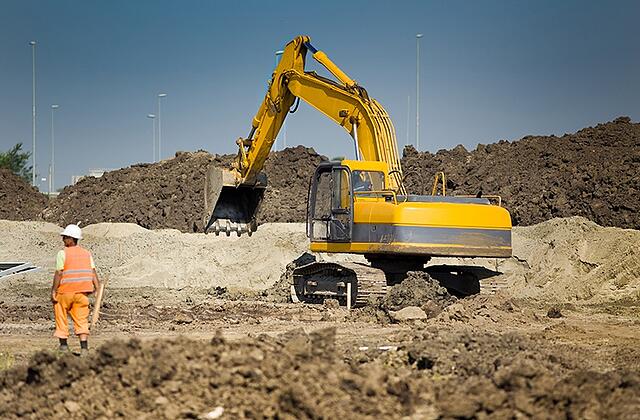Construction sites are often a storm of equipment, materials and people. With moving equipment considered the second most common cause of injury and fatalities on-site, it's important to know what prevention strategies are being successfully used across the industry.
To help you minimise the risk of a reversing incident on-site, here are a few tips you can follow.
- Design or modify your site layout to increase the visibility of workers and civilians moving around the site. You can do this by installing visibility mirrors in smaller spaces or by widening the areas where equipment tend to drive in reverse.
- Reduce blind-spots by making sure that mirrors on vehicles are kept clean and damage-free. A CCTV system or rear-view camera mounted to the vehicle are also being utilised to help the driver see what’s going on behind them.
- When operators cannot see what’s behind the equipment, they should go out of their cab and manually check what’s behind them before reversing.
- Fit your equipment or vehicles with reversing alarms. These alarms should be loud and audible amidst the noise around the job site. Flashing warning lights are used in cases where alarm noises are not audible enough.
- Barriers or buffers should be used on loading bays. These barriers should be highly visible to operators or drivers.
- Plan out and clearly mark areas for reversing such as loading bays.
- Make sure to keep people away from reversing areas if they are not needed.

- Utilise trained signallers on-site to help equipment operators manoeuvre in reverse. Signallers should always stand in a safe position where drivers can see them at all times – wearing high visibility vests are a must. In cases where signallers are not visible, operators should immediately stop the vehicle.
- Use two-way radios or other communication systems to help guide operators when they are driving in reverse.
By completing a risk assessment before breaking ground, you’ll be able to check whether your site is safe and ready to work on. We have created the free downloadable checklist below to help you jump-start your risk assessment.
Author's note: Points on this post were sourced from Health and Safety Executive UK

Related Articles

Distracted operators and the toll on fleet managers
Civil construction relies on a range of heavy excavation and earthmoving equipment. Operator distraction is a significant danger to the safe operation of this equipment, leading to serious crash-related injuries, delays in work progress and damage to other plant and equipment on-site. As our dependency on technology increases, so does the temptation to participate in distracting activities. Unfortunately, modern construction sites present equipment operators with continuous opportunities for distraction as well.

4 tips to keep your team safe on-site
Whether you’re a project manager, site supervisor, or machine operator, it’s your primary responsibility to make sure that your team is safe from any kind of injury or accident while working on site. Unfortunately, in some cases, our quest for project efficiency means that safety measures are cut to make room for further productivity. The link is simple - if you minimise the importance of safety guidelines, you’re increasing the risk of an on-site accident.

Quick tips to enforce fall protection regulations on-site
Without a doubt, working in construction has increased hazards compared to other industries, making safety regulations an ever-topical discussion point among construction companies. This has never been more true than with employees working at heights. When working feet above ground, workers should comply with the fall protection regulations set by site managers as these rules will keep everyone safe from accidents and from falling off a high structure.
Get the latest project news
- updates on Australia's pipeline of state and federal projects
- fresh contract awards from major contractors and builders
If you're looking to contact us about other matters, please contact us.



